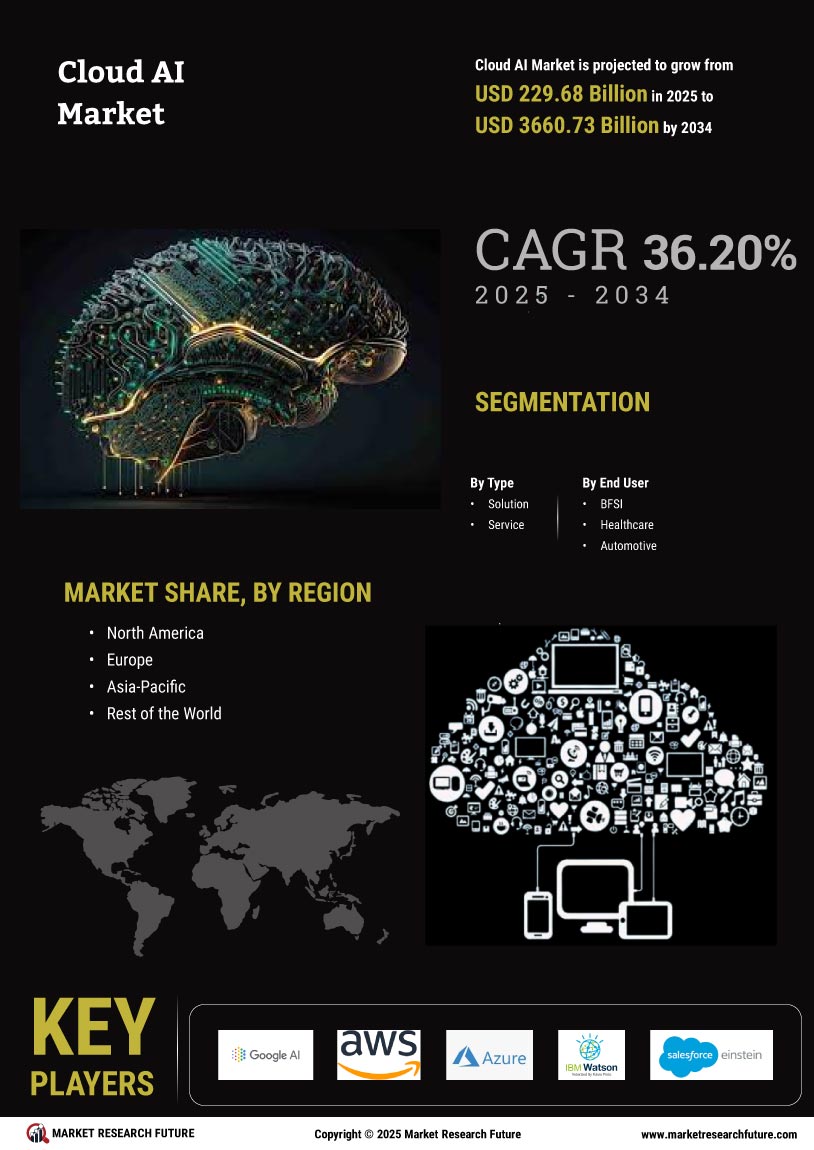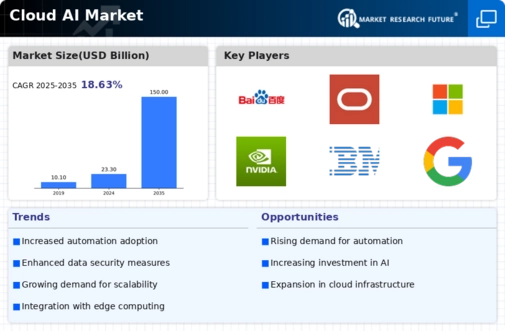The Cloud AI Market is currently characterized by intense competition and rapid innovation, driven by the increasing demand for AI-driven solutions across various sectors. Major players such as Amazon (US), Microsoft (US), and Google (US) are at the forefront, leveraging their extensive cloud infrastructures and AI capabilities to capture market share. Amazon (US) focuses on enhancing its AWS platform with advanced AI tools, while Microsoft (US) emphasizes integrating AI into its existing software ecosystem, particularly through Azure. Google (US) continues to innovate with its AI research initiatives, aiming to provide cutting-edge solutions that enhance user experience and operational efficiency. Collectively, these strategies not only bolster their competitive positioning but also shape the overall dynamics of the market, fostering an environment ripe for technological advancement.
In terms of business tactics, companies are increasingly localizing their operations to better serve regional markets, optimizing supply chains to enhance efficiency, and investing in partnerships to expand their service offerings. The competitive structure of the Cloud AI Market appears moderately fragmented, with a mix of established giants and emerging players. This fragmentation allows for diverse innovation pathways, as smaller firms often introduce niche solutions that challenge the status quo established by larger corporations.
In September 2025, Amazon (US) announced the launch of a new AI-driven analytics tool designed to optimize supply chain management for its enterprise customers. This strategic move is significant as it not only enhances Amazon's service portfolio but also positions the company as a leader in providing tailored AI solutions that address specific business challenges. By focusing on supply chain optimization, Amazon (US) aims to attract a broader customer base, particularly in industries heavily reliant on logistics and inventory management.
In August 2025, Microsoft (US) unveiled a partnership with a leading automotive manufacturer to integrate AI capabilities into their production processes. This collaboration is pivotal as it underscores Microsoft's commitment to expanding its AI applications beyond traditional software, venturing into the manufacturing sector. By aligning with a major player in the automotive industry, Microsoft (US) not only enhances its credibility but also opens new avenues for growth in a sector increasingly focused on automation and smart technologies.
In July 2025, Google (US) launched a new initiative aimed at enhancing AI ethics and transparency in its cloud services. This initiative is particularly relevant in today's market, where concerns about data privacy and ethical AI usage are paramount. By prioritizing ethical considerations, Google (US) seeks to differentiate itself from competitors, potentially attracting clients who are increasingly scrutinizing the ethical implications of AI technologies. This strategic focus on ethics may serve as a competitive advantage in a landscape where trust and transparency are becoming critical factors in decision-making.
As of October 2025, the Cloud AI Market is witnessing trends that emphasize digitalization, sustainability, and the integration of AI into everyday business processes. Strategic alliances are becoming increasingly vital, as companies recognize the need to collaborate to enhance their technological capabilities and market reach. Looking ahead, competitive differentiation is likely to evolve from traditional price-based competition to a focus on innovation, technological advancement, and supply chain reliability. This shift suggests that companies that prioritize these elements will be better positioned to thrive in an increasingly complex and competitive landscape.


















Leave a Comment